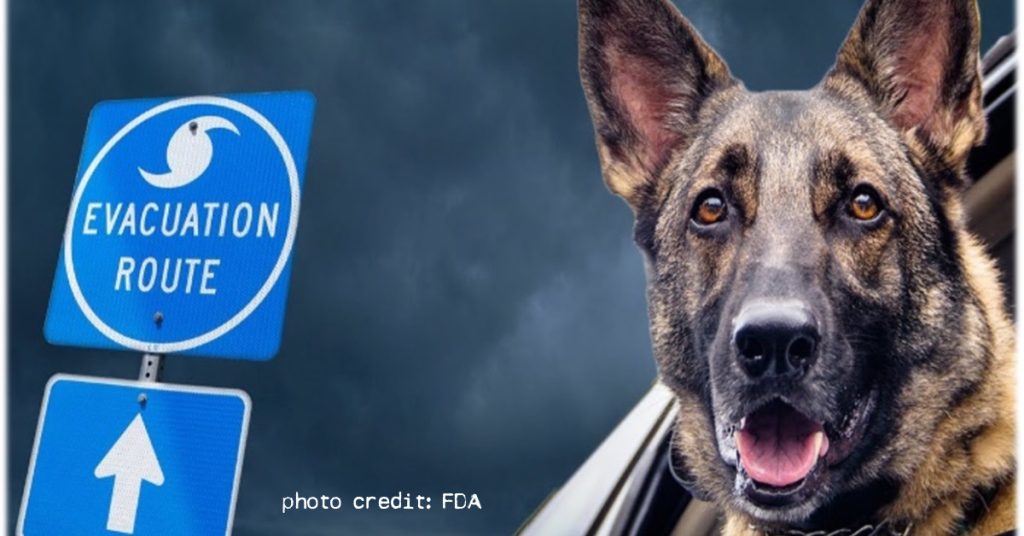by Daisy Luther, The Organic Prepper:
 If you received an alert that there was an emergency requiring immediate evacuation and had only minutes to prepare to leave your house with your pets, could you be ready? Most pet parents would say no. In a Godzilla-level emergency, such as a fast-moving wildfire or flood, evacuation might be mandatory with very little notice. Being read to evacuate with pets is incredibly important.
If you received an alert that there was an emergency requiring immediate evacuation and had only minutes to prepare to leave your house with your pets, could you be ready? Most pet parents would say no. In a Godzilla-level emergency, such as a fast-moving wildfire or flood, evacuation might be mandatory with very little notice. Being read to evacuate with pets is incredibly important.
TRUTH LIVES on at https://sgtreport.tv/
Since the 1980s, disasters have tripled globally. These include floods, wildfires, earthquakes, tornadoes and hurricanes. Emergencies can also be man-made, such as chemical spills. Thousands of animals are affected every year by natural disasters, because many pet owners don’t take the time to prepare.
The thought of getting displaced by a cat-astrophe can be a terrifying one, especially if you live with a treasured fur-iend. However, there’s no need to worry if you have a good preparedness plan that includes your pet. It will ensure that in case of an emergency, you and your extended furry family are all ready to leave in just a few wags of a tail.
This article covers key items and information you should have to successfully bug out with your dogs and cats fast, so you can all stay safe during a disaster.
5 steps to prep your pet to bug out
Prepping to exit quickly involves much more than just grabbing your animal and a leash or carrier. Here are 5 basic steps you can follow to ensure that you and your fur-iends are ready for an evacuation situation.
Pet identification
Your pet should wear identification at all times which includes your address and contact phone number. Having your animal microchipped is important too. But if your pet is lost then found during a disaster, a chip scanner may not be available. This is true for both cats and dogs. In an emergency, having ID could save your pet’s life and ensure you’ll be reunited.
Note that there are collar GPS devices available that allow you to track your pet through your smart phone.
Pet bug-out kit
Your pet’s kit should include the following basic items:
- Pet evacuation information: Two copies. (Explained in a later section.)
- Appropriate size carrier: 1 per pet, with identification information; include blanket or towel; your pet may have to stay in it for a while, so it needs to be large enough for them to turn around and lie down comfortably (and include a sanitary area); even large pets should have carriers; some are collapsible to save space.
- Carry bag: Large enough for all supplies
- Water: Enough for 3 – 7 days (more is better if space allows).
- Food and treats: Enough for 3 – 7 days (more is better) in waterproof containers. Include expiration dates.
- Bowls: For food and water – collapsible ones are good and save room
- Extra collar, leash and harness with ID: Most public areas require dogs to be leashed; include additional pet ID.
- Muzzle (for both dogs and cats: Any pet might get spooked in an emergency, and they may have to be handled by strangers. This can affect their behavior.
- Emergency first aid kit: Buy prepackaged or assemble yourself – Include a mini first-aid kit, too: Antibiotic ointment, tape, cotton bandages, self-stick gauze, scissors and latex gloves are standard.
- Emergency pet first aid instructions: Booklets, books, and smartphone apps are available.
- Medications: Include prescriptions and other medication your pet takes; Ask your vet about getting extra in case of an emergency.
- Flea and tick preventative: 1-month supply
- Calming remedy: Pets may be anxious in an emergency. Check with your vet. Examples: CBD or products such as Rescue Remedy.
- Favorite toy: Something familiar to your fur-iend is good.
- Emergency blanket: Emergency mylar blanket.
- Pet bed/blanket: Something familiar to your pet is good; include a blanket that can be placed over the carrier for calming.
- Sanitation (general): Poop bags, potty pads, hand sanitizer, non-nitrile disposable gloves, pet wipes, newspaper.
- Sanitation (cats): Small litter box (for back of carrier) or portable litter box, litter, scooper, poop bags, gloves, hand sanitizer.
- Pet ID/tracking device: Identification microchip; tag on collar/harness; optional – local smart tracking device on collar (track with smartphone); include emergency contact information on pet and on carrier.
- Extra cash: For additional costs, such as pet hotel or additional supplies (card readers may be down).
- Optional: Waterproof dog shoes/boots: If your dog is walking, in case of debris, wet or cold weather. Train your dog to wear these first!
Cat and dog emergency evacuation kits are available online, or you can create one yourself. Be sure to replace items that expire over time, such as medicine and food.
Have pet-friendly destinations
Did you know that many emergency shelters do not allow pets? Some partner with local animal shelters, such as the Humane Society, which can take in your pet temporarily. Be aware of your options ahead of time, as well as the rules and regulations associated with each. Public shelters are managed by your local Department of Emergency Management.
Read More @ TheOrganicPrepper.ca



